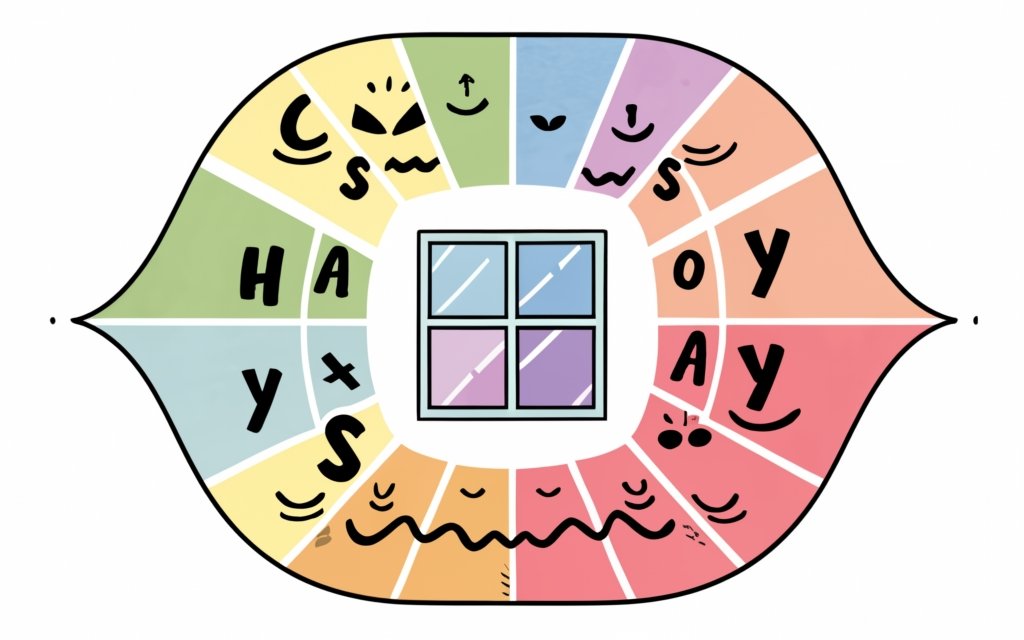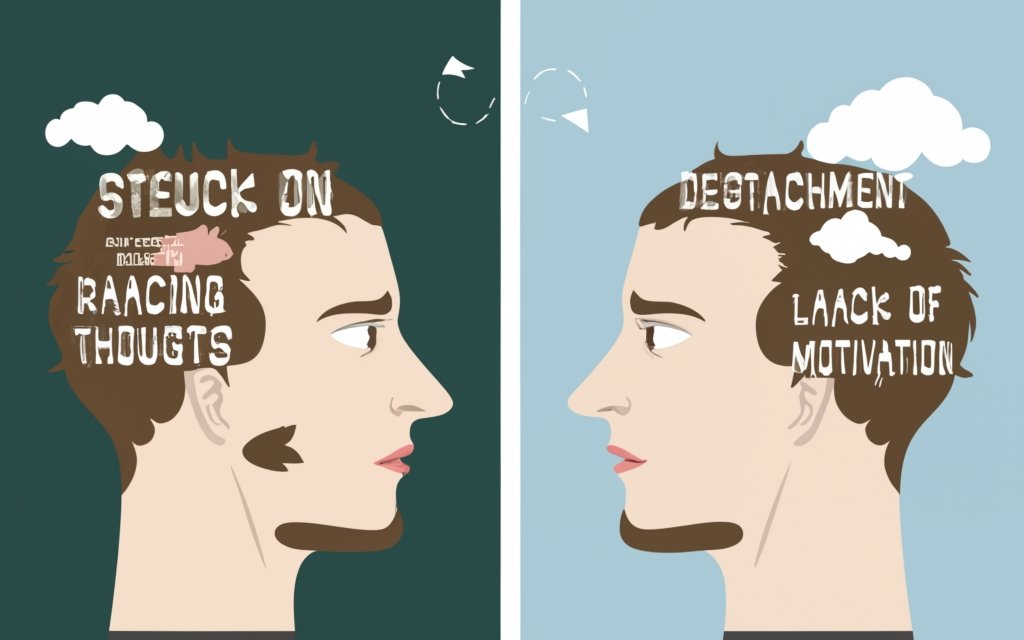Exploring the Window of Tolerance: Unveiling Nervous System Mastery
Every day, we navigate a delicate dance with our nervous system. It’s the conductor of our internal orchestra, orchestrating responses to life’s myriad stimuli. But, what exactly is this enigmatic “window of tolerance,” and how does it influence our emotional equilibrium? Let’s embark on an exploration of this fascinating realm.
Unveiling the Window of Tolerance

In the cacophony of modern life, your alarm clock often serves as the overture. It persistently reminds you of your commitments, and sometimes, it may play a discordant tune. The sensation of panic takes the stage, manifested in sweaty palms and racing thoughts. This heightened state triggers apprehensions about job security and family sustenance. As you rush out the door, coffee in hand, you find relief as your heart rate descends. Serendipitously, your favorite song plays, and equilibrium is restored. You arrive at work punctually.
This ebb and flow of emotional states mirrors the dynamics of your nervous system. It operates within a zone known as the “window of tolerance,” a concept introduced by the renowned somatics and trauma scientist, Peter Levine. Within this window, you deftly surf the waves of life’s stressors, spending most of your time in its comfortable center. However, chronic stress or lingering trauma can push you toward one extreme or the other.
Navigating Stress and Trauma
During periods of intense stress or resurfacing trauma, your window of tolerance may constrict, making you more susceptible to irritability and physical discomfort. Jaw clenching, digestive issues, and frequent headaches become unwelcome companions, signaling a nervous system in a state of disarray. Conversely, at the opposite pole, a prolonged state of disengagement can leave you with low energy, cold extremities, a diminished appetite, and a sense of numbness.
In the “stuck off” position, you may find solace in the embrace of your TV or a captivating novel, with work tasks appearing as insurmountable mountains. Preparing nourishing meals feels like a distant dream, and Uber Eats delivery personnel become familiar faces. Plans are canceled, curtains drawn, and you awake days later, bewildered by a Taco Bell wrapper’s presence.
On the other hand, the “stuck on” position finds you ensnared by perfectionism. No amount of work seems sufficient, self-critique echoes incessantly, and the ceaseless clenching of your teeth becomes a painful testament. An unrelenting urge to run grips you, despite never actually indulging in it. You anxiously pace, attempting to mend conversations from the past that might not even be your responsibility. Sleep remains elusive, as you yearn for tranquility.
The Perils of Prolonged Disregulation

While it is natural and even beneficial for your nervous system to oscillate between the heightened “stuck on” state and the numbed-out “stuck off” state, being trapped in either extreme can lead to severe consequences. In the “stuck on” state, sleep eludes you, racing thoughts dominate, and your heart tirelessly shields you from confronting underlying pain. Basic self-care falls by the wayside.
Conversely, in the “stuck off” state, detachment is your constant companion. Motivation wanes, nostalgia for the past grips you, and escapism becomes an appealing refuge. The digital realm replaces the beauty of nature, and your disconnection affects those around you, leaving them yearning for your presence.
Cultivating a Wider Window

If you recognize yourself in one of these states, rest assured that practices exist to widen your window of tolerance, bringing you closer to a regulated state. Here are two practical exercises to consider:
For When You Are Stuck On
- Leg Elevation: Begin by elevating your legs against a wall or a chair while lying on the floor. This simple act allows your heart to slow its frenetic pace, offering relief from panic or anxiety.
- Alternate Nostril Breathing: After finding a comfortable position with elevated legs, focus on your natural breathing rhythm. Without judgment, notice your breath’s natural ebb and flow. When ready, block your left nostril and inhale through the right. Pause at the peak of your in-breath, then close the right nostril to exhale. Inhale through the left nostril (while keeping the right closed), pause, and switch nostrils. Repeat this process 10-20 times for anxiety relief and nervous system regulation.
For When You Are Stuck Off
- Outdoor Sojourn: Step outside and find a comfortable position. Start by observing your breath.
- Sensory Awareness: Engage your senses: Name five things you see around you, then take a deep breath in and out. Progress to four things you hear, followed by a deep breath. Name three things you can smell or taste, and take a deep breath. Identify two sensations outside your body, such as textures or air temperature, and breathe deeply. Lastly, acknowledge one internal sensation, emotion, or feeling, and conclude with a final deep breath.
Your nervous system is a marvel of design, finely attuned to respond to life’s challenges. It’s crucial to return to a state of balance when it’s safe to do so. By increasing your window of tolerance, you can better navigate the tumultuous seas of existence. Pay close attention to your personal signs of operating outside this window; awareness is your first step toward a more regulated and fulfilled life.
Mastering Life Within Your Window

The elegance of your nervous system’s design lies in its adaptability. It allows you to shift gears when facing danger, and it can also guide you toward tranquility when needed. However, prolonged exposure to trauma or relentless stressors can misdirect these coping mechanisms, leading to untimely or excessive activation. Being late for work, for example, should not spark such intense reactions that you forget to nourish your body or rest.
Enhancing Your Window of Tolerance
Increasing your window of tolerance involves a gradual process of self-regulation. It’s a journey of reacquainting yourself with your internal responses and learning how to manage them effectively. Here are some additional practices to help you expand your window:
- Mindful Meditation: Regular meditation sessions can significantly enhance your self-awareness and emotional regulation. By observing your thoughts without judgment and focusing on your breath, you’ll develop the ability to notice signs of dysregulation and gently guide yourself back to a state of balance.
- Expressive Arts: Engaging in creative outlets such as painting, writing, or playing music can provide an avenue for processing and expressing complex emotions. These activities offer a safe space to explore your feelings and experiences.
- Somatic Therapy: Somatic practices like yoga, tai chi, or Feldenkrais can help reconnect you with your body and its sensations. These modalities facilitate the release of stored tension and promote physical and emotional balance.
- Talk Therapy: Speaking with a mental health professional can be invaluable in understanding and addressing the roots of your dysregulation. Cognitive-behavioral therapy (CBT) and other evidence-based therapies can provide tools to navigate the challenges of your emotional landscape.
The Path to Empowerment

It’s essential to recognize that your nervous system is not your adversary but rather a guide through the intricate labyrinth of your emotional life. By increasing your window of tolerance, you empower yourself to face the world with resilience and presence.
Moreover, understanding your unique response patterns when operating outside your window equips you with the tools to regain balance. From this place of heightened awareness and self-regulation, you can actively improve your experience of the world, your relationships, and your overall well-being.
Conclusion

In delving into the intricacies of the window of tolerance, we uncover the remarkable adaptability of our nervous system. It’s a testament to our resilience and capacity to navigate the tumultuous waters of life. By expanding this window through mindful practices, self-awareness, and therapeutic interventions, we empower ourselves to harmonize the symphony of our internal world.
Our journey doesn’t end here, though. It’s an ongoing exploration, a commitment to honing the skills of self-regulation, and a dedication to living a more balanced and fulfilled life. By understanding our unique response patterns and the profound impact of prolonged dysregulation, we take the reins of our emotional well-being, forging a path towards a brighter and more harmonious future.
Frequently Asked Questions
1. What exactly is the “window of tolerance”?
The “window of tolerance” is a concept in somatic and trauma science, coined by Peter Levine. It represents a state of emotional equilibrium and resilience within which an individual can effectively respond to stressors and life’s challenges. Operating within this window allows for a balanced and adaptive response to various situations.
2. How can I tell if I’m operating outside my window of tolerance?
Recognizing when you’re operating outside your window can be facilitated by paying attention to your body and emotions. Signs of hyperarousal, or being “stuck on,” include heightened anxiety, restlessness, and an inability to relax. Conversely, signs of hypoarousal, or being “stuck off,” involve numbness, disconnection, and a lack of motivation.
3. Can I widen my window of tolerance, and how do I do it?
Yes, you can increase your window of tolerance through various practices. Techniques such as mindfulness meditation, somatic therapy, expressive arts, and talk therapy can help you build greater self-awareness and emotional regulation. These practices enable you to respond more adaptively to stressors and enhance your overall well-being.
4. Is it normal to experience both “stuck on” and “stuck off” states?
Yes, it’s entirely normal to oscillate between these states. Your nervous system is designed to respond to different situations with heightened alertness or calmness when necessary. The key is to avoid getting stuck in one state for extended periods, as this can lead to imbalances and emotional challenges.
5. What role does self-awareness play in regulating the window of tolerance?
Self-awareness is pivotal in recognizing when you’re operating outside your window and taking steps to regulate your emotions. It allows you to identify your unique response patterns and empowers you to navigate life’s challenges more effectively. Self-awareness is a fundamental step in achieving emotional balance and well-being.
Continuing the Journey
As we wrap up our exploration of the window of tolerance, remember that life is a continuous journey. Your nervous system is a remarkable companion, guiding you through the labyrinth of your emotions. By nurturing and expanding your window, you embrace the power to thrive in the face of adversity and create a harmonious symphony of your own. With increased self-awareness, the right practices, and a commitment to balance, you can embark on a path towards a brighter, more fulfilled future.





